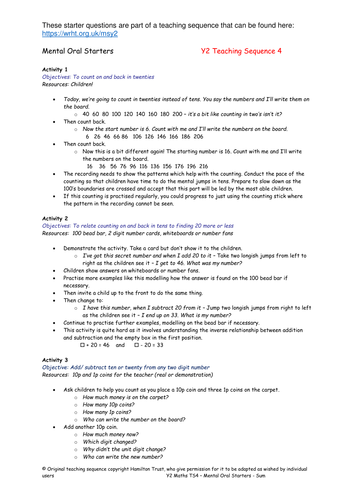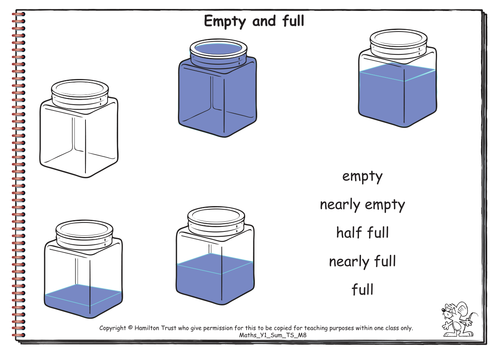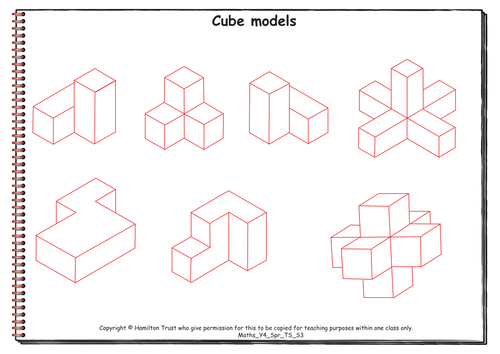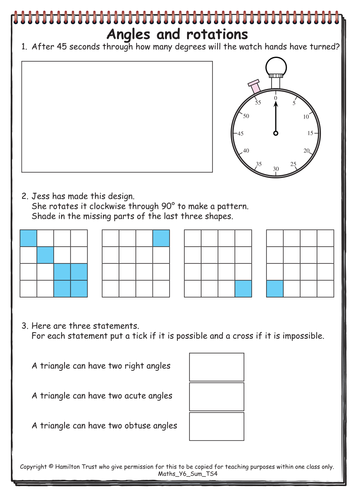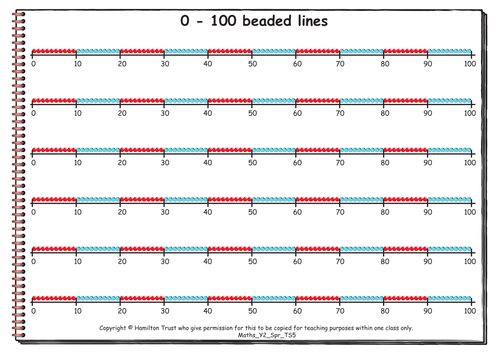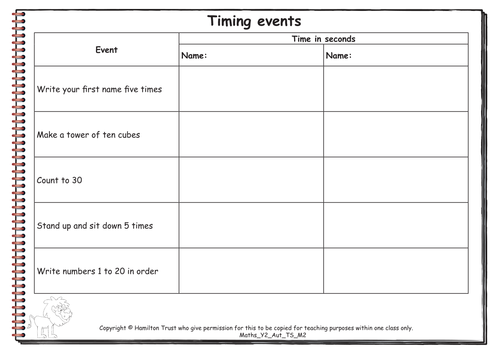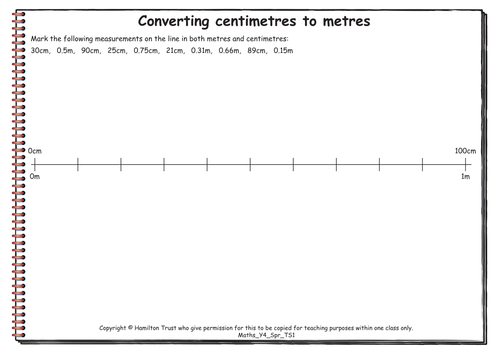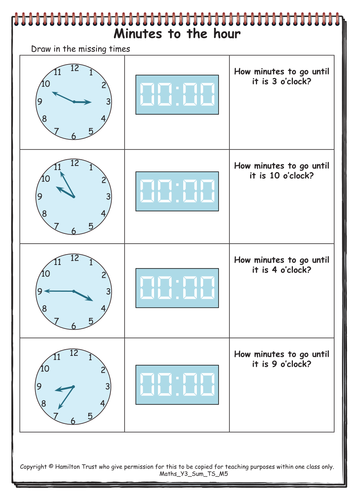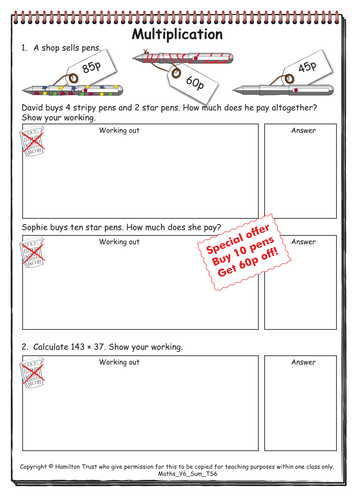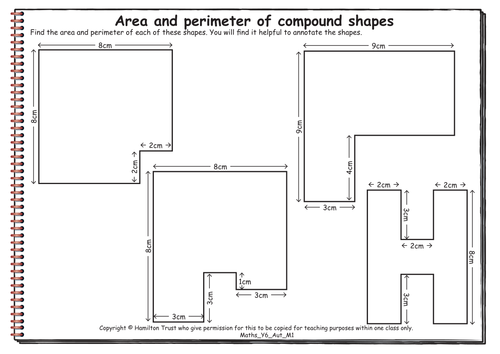
3k+Uploads
10009k+Views
11617k+Downloads
Mathematics

Maths Y3 Spring Teaching Sequence M4
Time, reading digital and analogue clocks (minutes past and to) (three days).
Children revise the equivalent digital and analogue ways of recording times between the hour and half past the hour (minutes past), and are then introduced to how to describe analogue times as minutes to the next hour. They practise finding the equivalent digital and analogue times. Intervals are found between times, but not bridging the hour at this point. Chn work together to think of times 20 minutes, then 1¼ hours apart.
Find additional lesson plans and resources at www.hamilton-trust.org.uk.

Mental Oral Starters - Year 2
Mental and oral starters for Year 2 Summer Teaching Sequence 4.
To count on and back in twenties. To relate counting on and back in tens to finding 20 more or less. Add/ subtract ten or twenty from any two digit number.
Find additional lesson plans and resources at www.hamilton-trust.org.uk.

Maths Y1 Summer Teaching Sequence M8.
Capacity (three days).
Children capacities of pairs of containers by filling one with water and pouring it into the other to see if the water overflows or doesn’t fill the second container. They then use cups of water to fill containers and discuss how this makes it easier to compare the capacities of more than two containers. Chn use different non-standard measures to fill containers, making estimates as they gain more experience.
Find additional lesson plans and resources at www.hamilton-trust.org.uk.

Maths Y4 Spring Teaching Sequence S3
Properties of 3D solids (three days).
Children revise the names and properties of 3D solids and learn the name and properties of the tetrahedron. Straws are used to make skeletons of 3D shapes, reinforcing the numbers of edges and vertices. Children investigate which nets will make a cube and investigate nets of other shapes including packaging.
Find additional lesson plans and resources at www.hamilton-trust.org.uk.

Maths Y4 Autumn Teaching Sequence 4
Multiplication and division (including commutativity, and rounding up or down after division) (three days).
Children use commutativity (the fact the multiplication can be done in any order, a x b is the same as b x a) and their knowledge of multiplication facts to multiply single digits together, using jottings where necessary, and write the corresponding divisions. They divide by single digits using knowledge of multiplication and division facts, find remainders, recording jottings where helpful. They decide whether to round the answer up or down according to the context of a word problem. Multiplication is used to check division.
Hamilton’s maths resources not only help you plan your maths lessons, but also ensure mathematical progression from Reception through key stage 2.

Maths Y6 Summer Teaching Sequence 4
Revision: Shape (two days).
Children discuss turns of multiples of 90° on the clock face, and rotate shapes through 90°. They sort shapes according to their properties, e.g. number of right angles, obtuse angles, acute angles, lines of symmetry, and pairs of parallel sides. They practise measuring angles accurately with a protractor.
Find additional lesson plans and resources at www.hamilton-trust.org.uk.

Maths Y1 Summer Teaching Sequence M6
Telling the time to the half hour (three days).
Children revise telling the time to the hour and half hour, using their arms to show times, matching dominoes, filling in missing times on a timeline and matching times before a sand timer runs out. The digital format is also introduced.
Find additional lesson plans and resources at www.hamilton-trust.org.uk.

Maths Y2 Spring Teaching Sequence 5
Add/subtract 11, 12, 13, 21, 22, 23 (three days).
Children use J10 (Jump 10, adding/subtracting two-digit numbers by adding/subtracting the tens first) to add and subtract 11, 12, 13, using a bead string initially and then recording their steps on either beaded or landmarked lines. The special cases where adding subtracting 11, 12 or 13 will take them past another multiple of ten (e.g. 48 + 13, 51 – 12) are given particular attention. Children then go on to apply the same strategy to add and subtract 21, 22 and 23 including in the context of money.
Find additional lesson plans and resources at www.hamilton-trust.org.uk.

Maths Y2 Autumn Teaching Sequence M2
Tell the time to the quarter of the hour and use units of time (four days).
Children learn about the relationships between seconds, minutes, hours, days, weeks and years. They use stopwatches and sand timers to time events and also how many actions they can repeat in one minute, to gain a sense of a minute. Children make sand and water clocks. The quarter of an hour is introduced and children order clocks including those showing ‘quarter past’. Children learn how ‘half past’ and ‘o’clock’ times are displayed on digital clocks.
Find additional lesson plans and resources at www.hamilton-trust.org.uk.

Mental Oral Starters - Year 1
Mental and oral starters for Year 1 Spring Teaching Sequence 4.
Count on in 10s from a single digit number. Count one more/less than any two digit number. Relate a 1-100 number line to a 1-100 number square. Count in tens to 100 in the context of money. Count on in tens from single digits.
Find additional lesson plans and resources at www.hamilton-trust.org.uk.

Maths Y4 Spring Teaching Sequence 1
Decimal notation for tenths and hundredths (three days).
Children learn to write distances of less than 100cm as metres, discussing the value of each digit. They move onto convert distances of more than 100cm from centimetres to metres, ordering measurements and using a number line to help. Results (times to the nearest hundredth of a second) of Olympic events are then compared and athletes’ positions worked out.
Find additional lesson plans and resources at www.hamilton-trust.org.uk.

Maths Y2 Summer Teaching Sequence 5
Add/subtract two-digit numbers by adding multiples of ten then adding the units using known addition facts (four days).
Children revise adding and subtracting 21, 22, and 23 to/from two-digit numbers using Jump (J10, adding/subtracting a two-digit number by counting on/back in tens first). They then use this strategy to add and subtract two-digit numbers on landmarked lines, then empty number lines. They are encouraged to add/subtract the units digit using knowledge of addition/subtraction facts and not counting in ones.
Find additional lesson plans and resources at www.hamilton-trust.org.uk.

Mental Oral Starters - Year 1
Mental and oral starters for Year 1 Autumn Teaching Sequence 12.
To begin to know doubles of numbers up to five. To practise adding two small numbers.
Find additional lesson plans and resources at www.hamilton-trust.org.uk.

Maths Y2 Autumn Teaching Sequence 3
Number facts to 20, equality [3 days].
Children revise partitioning pairs up to and including ten, then 20, recording the corresponding addition and subtraction sentences. They use images such as the 20 bead frame and ‘slidy’ box’ cards to reinforce the idea of an empty box in number sentences. They use the idea of equality and the image of the number balance to help them to write number sentences such as 7 + 3 = 6 + 4.

Maths Y3 Summer Teaching Sequence M5
Telling the time and calculating intervals (three days).
Children revise the equivalent digital and analogue ways of recording times between the half hour and next hour (minutes to). Intervals are found between times, including bridging the hour (e.g. calculating the time difference between 2:50 and 3:15) using analogue clocks to help. Children work together to use a time line to find pairs of times 25 minutes apart.
Find additional lesson plans and resources at www.hamilton-trust.org.uk.

Maths Y6 Summer Teaching Sequence 6
Revision of multiplication and division, and solving word problems (four days).
Children solve straightforward multiplications and divisions involving numbers with up to three digits and one decimal place, including those set in word problems. They use mental, written and calculator methods. Addition and subtraction are used to solve word problems. Children use their knowledge of addition and subtraction to find mystery numbers. They solve word problems involving several steps including combinations of addition, subtraction, multiplication and division.
Find additional lesson plans and resources at www.hamilton-trust.org.uk.

Maths Y6 Autumn Teaching Sequence M1
Measures: area and perimeter (four days).
Children use a formula to find the area of rectangles, and then divide up compound shapes into rectangles to find their area. They learn how to find the area of right-angled triangles, and use this to find areas of compound shapes that can be divided into rectangles and triangles. They also find the perimeters of rectangles and compound shapes. Drawing round objects on squared paper, counting squares and taking account of partial squares is used to find the area of handprints and leaves.
Find additional lesson plans and resources at www.hamilton-trust.org.uk.

Maths Y5 Spring Teaching Sequence 2
Place value of decimals (three days).
Children place numbers with one decimal place on a number line, then do the same for numbers with two decimal places. They use this experience to order a mixed set of numbers with one or two decimal places. Numbers with one or two decimal places are rounded to the nearest whole number, and the reasons for doing so discussed.
Find additional lesson plans and resources at www.hamilton-trust.org.uk.

Maths Y3 Autumn Teaching Sequence 6
Subtracting using bridging tens, place value and number facts (three days).
They use number facts to help them to find a difference between two numbers requiring two steps (e.g. 40 – 27, and 34 – 37) and then three steps (e.g. 52 – 38). Initially they use the contexts of finding change, remaining distance to travel and comparing dog lengths. They record their steps on landmarked or empty number lines.
Find additional lesson plans and resources at www.hamilton-trust.org.uk.

Maths Y2 Summer Teaching Sequence M6
Time (three days).
Children revise telling the time to the quarter hour. They match written times and those shown on analogue clocks, and order times. The digital format is introduced and children match times on analogue clocks with those on digital clocks.
Find additional lesson plans and resources at www.hamilton-trust.org.uk.


